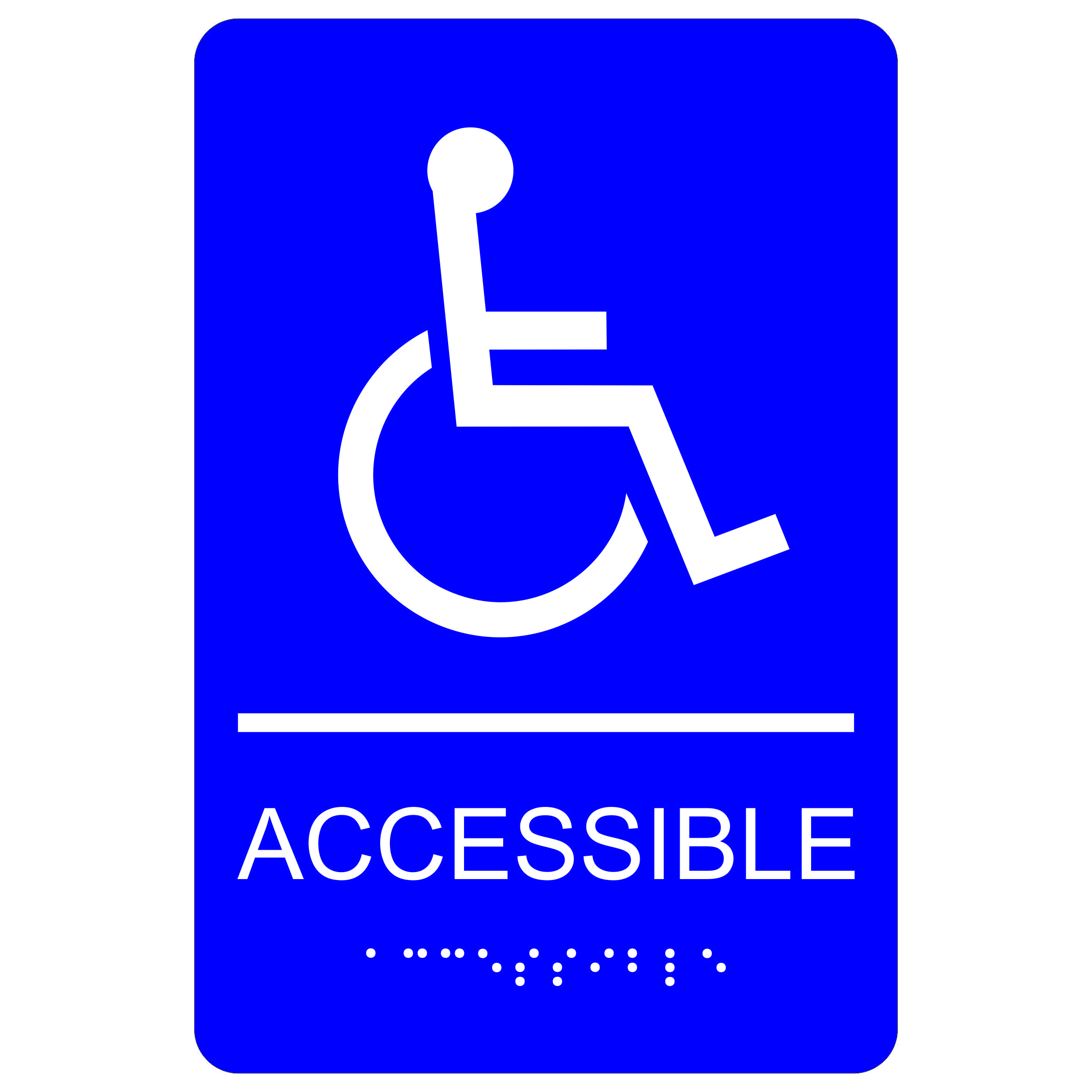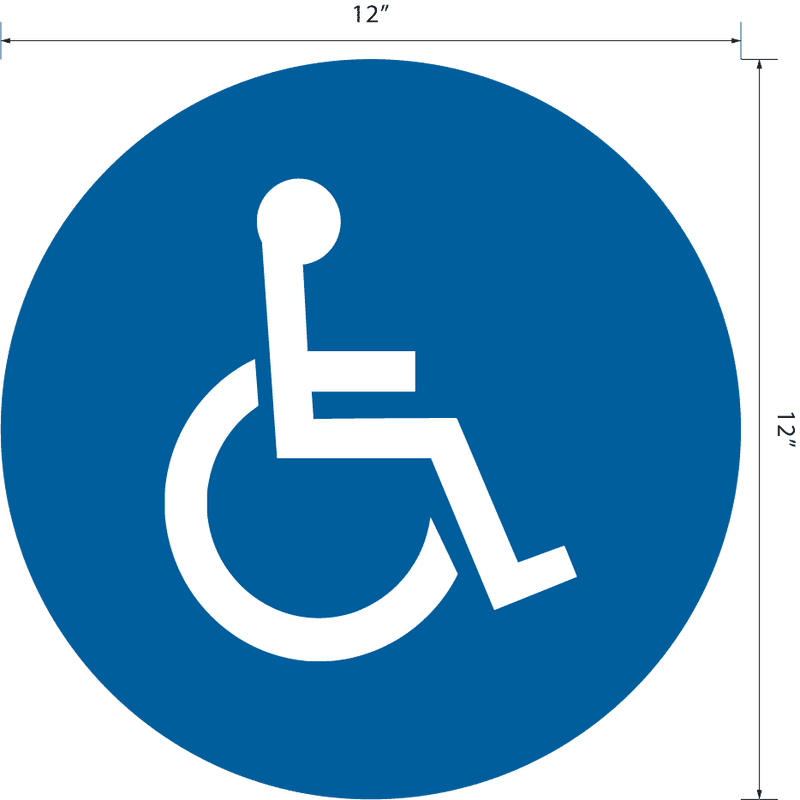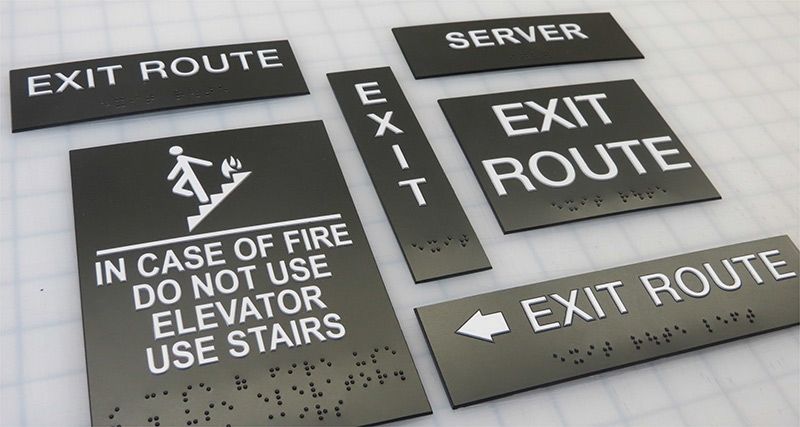A Comprehensive Guide to Picking the Right ADA Signs
Wiki Article
Exploring the Trick Attributes of ADA Indications for Improved Accessibility
In the world of accessibility, ADA indications offer as silent yet effective allies, ensuring that areas are inclusive and accessible for individuals with handicaps. By incorporating Braille and tactile components, these signs break obstacles for the aesthetically damaged, while high-contrast color plans and legible font styles provide to diverse aesthetic needs.Significance of ADA Compliance
Making sure conformity with the Americans with Disabilities Act (ADA) is crucial for cultivating inclusivity and equivalent accessibility in public areas and workplaces. The ADA, passed in 1990, mandates that all public facilities, employers, and transport solutions fit individuals with impairments, ensuring they delight in the exact same legal rights and opportunities as others. Compliance with ADA requirements not only meets lawful commitments however also enhances an organization's credibility by demonstrating its commitment to variety and inclusivity.Among the key aspects of ADA conformity is the execution of available signage. ADA indications are made to guarantee that people with handicaps can conveniently navigate via rooms and structures. These indications have to stick to certain standards concerning dimension, font style, color contrast, and placement to ensure visibility and readability for all. Effectively executed ADA signs aids get rid of barriers that people with disabilities frequently experience, thereby promoting their independence and self-confidence (ADA Signs).
Moreover, sticking to ADA guidelines can alleviate the risk of possible fines and lawful repercussions. Organizations that stop working to conform with ADA standards may encounter legal actions or fines, which can be both economically burdensome and destructive to their public picture. Hence, ADA compliance is integral to promoting a fair atmosphere for everyone.
Braille and Tactile Components
The consolidation of Braille and responsive components into ADA signs symbolizes the principles of accessibility and inclusivity. These attributes are vital for people that are visually impaired or blind, enabling them to browse public spaces with better independence and self-confidence. Braille, a responsive writing system, is necessary in giving composed details in a layout that can be conveniently viewed via touch. It is typically put underneath the corresponding message on signage to make sure that individuals can access the details without visual help.Responsive components extend beyond Braille and include elevated icons and personalities. These elements are designed to be discernible by touch, enabling individuals to recognize room numbers, washrooms, leaves, and other important locations. The ADA sets specific standards regarding the size, spacing, and positioning of these responsive components to enhance readability and guarantee uniformity across different environments.

High-Contrast Color Systems
High-contrast color pattern play a crucial duty in improving the visibility and readability of ADA signs for people with visual problems. These plans are vital as they make best use of the distinction in light reflectance in between text and background, making certain that indicators are easily discernible, also from a range. The Americans with Disabilities Act (ADA) mandates the usage of particular color contrasts to fit those with limited vision, making it an essential aspect of conformity.The effectiveness of high-contrast shades depends on their ability to attract attention in different lighting conditions, consisting of poorly lit environments and locations with glow. Commonly, dark message on a light history or light text on a dark history is used to achieve optimum comparison. For example, black message on a white or yellow background gives a stark visual distinction that assists in quick recognition and understanding.

Legible Fonts and Text Dimension
When considering the style of ADA signage, the option of understandable typefaces and appropriate text size can not be overstated. These aspects are critical for ensuring that signs come to people with aesthetic impairments. The Americans with Disabilities Act (ADA) mandates that fonts should be not italic and sans-serif, oblique, manuscript, extremely attractive, or of uncommon type. These demands aid guarantee that the text is quickly understandable from a range which the characters are appreciable to varied target markets.According to ADA guidelines, the minimal message height should be 5/8 inch, and it must enhance proportionally with viewing range. Uniformity in text size adds to a natural aesthetic experience, aiding people in browsing atmospheres effectively.
Moreover, spacing between lines and letters is important to legibility. Ample spacing avoids personalities from showing up crowded, enhancing readability. By sticking to these standards, developers can substantially enhance accessibility, making certain that signs offers its designated objective for all individuals, despite their visual abilities.
Efficient Positioning Techniques
Strategic positioning of ADA signs is essential for optimizing availability and making sure conformity with legal requirements. ADA standards state that indications must be placed at a height between 48 to 60 inches from the ground to guarantee they go to this site are within the line of sight for both standing and seated individuals.Furthermore, indications have to be placed nearby to the lock side of doors to enable simple identification before access. This placement assists people situate rooms and areas without blockage. In cases where there is no door, signs must be situated on the closest nearby wall. Uniformity in indicator positioning throughout a facility boosts predictability, decreasing confusion and boosting general user experience.

Verdict
ADA indicators like it play an important duty in promoting access by integrating attributes that address the requirements of people with disabilities. Integrating Braille and responsive elements ensures critical information comes to the visually impaired, while high-contrast color plans and legible sans-serif font styles enhance presence throughout different lights conditions. Effective placement methods, you can check here such as appropriate mounting heights and tactical places, additionally promote navigating. These components collectively foster an inclusive environment, underscoring the significance of ADA compliance in making sure equivalent gain access to for all.In the world of availability, ADA indications serve as silent yet powerful allies, making certain that rooms are inclusive and accessible for people with specials needs. The ADA, enacted in 1990, mandates that all public facilities, companies, and transportation services suit people with impairments, ensuring they appreciate the very same legal rights and chances as others. ADA Signs. ADA signs are designed to make certain that people with specials needs can easily browse with buildings and rooms. ADA guidelines specify that indications ought to be mounted at an elevation between 48 to 60 inches from the ground to guarantee they are within the line of view for both standing and seated individuals.ADA signs play an essential function in promoting availability by integrating features that deal with the demands of people with disabilities
Report this wiki page